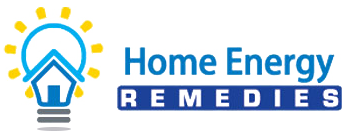Energy Audits can be quick and focused or comprehensive and detailed. It all depends on what you need.
Air Leaks
Air leaks are often invisible losses of energy and the source of many comfort issues. Many of these air leaks are undetectable without a Blower Door. The Blower Door is a controlled fan that is sealed into an exterior door frame and used to pressurize or depressurize the house. Once the home is depressurized the auditor, along with the homeowner, can identify leaks and figure out where they are coming from. Many leaks will show up far from the opening that is letting them into the home. The Blower Door will also display how much air is leaking. By opening and closing inside doors the leakiest areas can be identified.
Checking for air leaks in ducting requires a Duct Blaster. A Duct Blaster is a smaller version of the blower door that is connected to the ducts. Using both the Duct Blaster and Blower Door the air leaks can be broken down into supply, return and how much is leaking to the outside of the home. Leaking to the outside is just throwing away heat.
If the home is not properly air sealed all the other upgrades will have reduced effectiveness. Some will have to be redone in order to do air sealing.
One example is an attic that was insulated by adding fiberglass bats of R-19. Due to air leaks the heating bill was unaffected. This summer the home is going to be air sealed and the insulation reinstalled.
Thermal Barrier
The thermal barrier is the parts of the home that prevent heat and cold from entering the home. This includes walls, floors, ceilings, roofs, insulation, doors and windows. It also factors in the part of the country, calculating the effect of temperature, wind and solar. The audit requires inputting information about, among other things, the types of walls, window area, overhangs, doors, the directions the walls face, pay for coursework, foundation type, which parts of the house are conditioned and which parts are not. Once this is done the software will generate an estimated annual energy cost. We can then input modifications to the home and see how the costs change. While everyone uses their home differently the relative cost differences are good indications of how the changes will affect the home.
One of the advantages of the program is that we can change more then one thing and see what the net effect is. If there are three improvements that could cut costs by 1/3rd it is clear that doing all three will not eliminate all costs. The first will be 1/3rd, the second will be 1/3rd of what is left and the last will be 1/3rd of what remains after the second or 70% reduction. The most cost-effective solution will be to take the one with the shortest payback first, then figure out if the second item should be done now or later.
Combustion Efficiency & Air Quality
This section measures the effectiveness of the water heater, boiler, furnace, gas stove, space heater, etc. The effectiveness of this equipment is broken into two distinct areas. First is combustion, is the fuel being burned completely, generating smoke or carbon monoxide (CO) and are the exhaust systems working properly? This is done with instruments that measure the combustion gases’ composition at three separate locations. The second area is how effectively that heat is being taken out of burnt fuel and being delivered to the home. This is done by using the temperature readings from the first part and making sure that the heat exchanger is taking out the correct amount of heat. Too little and energy is wasted, to much and the exhaust gases may not carry all the harmful chemicals out the chimney.
